By Glenn Barnett
Just before dawn, the aircraft carrier USS Enterprise turned into the wind to launch her planes. Nervous and excited pilots roared into the darkness of the vast Pacific toward the unsuspecting Japanese. The “Big E” would repeat this scene many times during the war, but this morning, January 31, 1942, in the Marshall Islands was the first time since Pearl Harbor that an American surface vessel had struck an offensive blow.;
On the flag bridge, watching the planes disappear into the gloom, stood Rear Admiral William F. Halsey, overall commander of the U.S. Navy’s Task Force 16. He would still be on the bridge, chain smoking and chewing his nails, when the last pilot returned in the early afternoon. Then he turned tail and raced back to Hawaii. Angry Japanese bombers pursued him ineffectually until dark.
The quick strike and rapid withdrawal became Halsey’s trademark in the early days of the war. Delighted sailors called his hurried retreats, “Hauling ass with Halsey.” Halsey struck again on February 23, this time against Wake Island, and again on March 4 at Marcus Island (Minami-Torishima), just 900 miles from Japan.
For his encore in April, Halsey would command the naval force that carried Colonel Jimmy Doolittle’s strike group for their attack against Tokyo. When the Doolittle task force was discovered, it was Halsey who made the decision to launch the planes early.
None of these raids inflicted heavy damage on the enemy, but the American public did not care. Their Navy was at last doing something to avenge the dastardly attack on Pearl Harbor. The raids were particularly satisfying to Halsey. On that infamous December 7, 1941, he had been aboard the Enterprise returning to Pearl from a mission to deliver fighter planes to Wake Island.
The little task force was due back at its Hawaiian berth by Sunday at 7:30 am, but foul weather held it up and saved the precious carrier from the fate inflicted on Battleship Row.
“I’m so Proud of You Men, I Could Cry”
News of the deliberate and unprovoked attack reached Halsey at sea that morning. While the bombs still fell, Admiral Husband E. Kimmel, commanding at Pearl Harbor, ordered all ships then at sea to rally to Halsey’s task force. For the next few days Halsey was in operational command of what remained of the Pacific Fleet.
Americans, starved for good news, embraced the fighting admiral as a hero. He embodied the spirit of the aggressive naval commander, fearless and determined and a little rough around the edges. He was also a little sentimental. He once replied to an ovation from the crew of Enterprise by saying, “I’m so proud of you men, I could cry.”
The public soon learned that the admiral was born on October 30, 1882, in Elizabeth, NJ. His father was a Navy captain, so the sea was in his blood. His mother personally badgered President William McKinley for a presidential appointment to the Naval Academy for her son.
An indifferent student, young Bill graduated from Annapolis in 1904. At the time, President Theodore Roosevelt was busy building up America’s fleet and desperately needed young officers. Midshipman Bill Halsey’s first assignment was aboard the battleship Missouri, the “Mizzy” to her crew. Forty years later America’s newest and last battleship would also be named the Missouri, the “Mighty Mo,” and she would be Admiral Halsey’s flagship.
In 1908, Bill Halsey steamed with the Great White Fleet on its world tour. The most memorable port of call on the year-long cruise was at Tokyo Bay, where American officers were guests aboard the Japanese battleship Mikasa, flagship of Admiral Heihachiro Togo, victor over the Russian Baltic Fleet at the epic battle of Tsushima during the Russo-Japanese War of 1904-1905. Halsey always remembered the game of blanket toss with which officers from each navy “honored” the rival commander. He would later write, “I wish we had thrown him [Togo] into the bay.”
During the Great War, Lieutenant Halsey commanded a destroyer on convoy duty. Much of his career would be spent commanding destroyers and destroyer task groups. That finally changed in 1935, when he was offered command of the Navy’s newest aircraft carrier, the Saratoga, on the condition that he attend flight school and become rated as an observer.
Many of Halsey’s Sayings Were too Profane to Publish in Papers
Halsey went to Pensacola for training, but insisted on being trained as a pilot despite one bad eye. At age 54, he proudly earned his wings along with men half his age. In every picture of him during the war, even in the minimalist khaki uniforms favored by admirals and ensigns alike, he is always seen wearing his wings. From carrier captain he soon advanced to flag admiral of carrier task forces. He was in command of Task Force 16 when war broke out in the Pacific.
So much was written about the admiral in the first months of the war that somewhere, it is believed, a reporter misspelled his name. “Bill” became “Bull,” and the famous nickname stuck. “Bull” was an appropriate moniker for the craggy faced, belligerent and profane sailor who admonished his forces to “Kill Japs, kill Japs, and then kill more Japs.” Many of his sayings were too profane to be published.
Enterprise and another carrier, Hornet, had barely returned to Pearl Harbor from launching the Doolittle raid when Halsey was ordered to sea again. The Japanese were reported to be transporting troops to Port Moresby in Southern New Guinea. If successful, they would control the whole of that vast island and place Australia in imminent danger of invasion.
The carriers Lexington and Yorktown, under the command of Admiral Frank “Jack” Fletcher, were already in the Coral Sea searching for the Japanese. Halsey steamed with all deliberate speed to support them, but he was too late. The Battle of the Coral Sea was fought before he arrived.
Having steamed hundreds of miles to the south, Halsey was ordered to expedite his return to Pearl. The Japanese were attempting a fresh offensive. Intelligence indicated that their next target would be Midway Island. The “Big E” rushed to refuel and rearm before heading north, but Halsey did not go with her. He had been at sea constantly in pressure- packed wartime conditions for five months. He was under such stress that a severe rash broke out over much of his body, causing him great pain. His condition could not have been helped by his two-pack-a-day smoking habit or the 10 cups of coffee that fueled his extended watches on the bridge. The ship’s doctor ordered him to take leave.
Halsey, the patient, followed the battle through reports he got on his way home. He was pleased that American forces had soundly thrashed the enemy, but disappointed that he was not able to command. By the time he returned to the Pacific in August, the situation had become desperate in the Solomon Islands.
Saratoga and Enterprise Severely Damaged; the Wasp was Sunk
Admiral Robert Ghormley commanded in the South Pacific Theater (SoPac). Under his direction and over all authority, the U.S. Marines landed on the island of Guadalcanal on August 7. Things immediately started to go wrong. The following night, a Japanese fleet skilled at night fighting and using superior Type 97 Long Lance torpedoes, sank four American cruisers during the Battle of Savo Island. Soon after that, the carriers Saratoga and Enterprise were severely damaged, and the carrier Wasp was sunk.
The Navy did not initiate further battle, allowing the Japanese to land reinforcements and supplies as well as to bombard Marine positions on Guadalcanal night and day. Ghormley’s headquarters aboard the aging repair ship Argonne, anchored at Noumea in New Caledonia, was choking on paperwork and despair. By mid-October, his boss, Admiral Chester Nimitz, Commander in Chief of the Pacific Fleet (CinCPac), decided to replace him.
Meanwhile, Halsey arrived at Noumea on an inspection tour. As he stepped into a waiting whaleboat for the short voyage to the Argonne, he was handed the orders to relieve and replace his old friend Ghormley. “Jesus Christ and General Jackson,” he muttered as he read his orders, “this is the hottest potato they have ever handed me.”
One of Halsey’s first actions was to meet with Maj. Gen. A. Archer Vandegrift, commanding the Marines on Guadalcanal. Vandegrift said he could hold if he had more support. Halsey told him that he would support him with everything he had. Despite the cost, Halsey kept his word.
The Battle of Guadalcanal—on shore, at sea, and in the air—lasted from August 1942 until February 1943, and was arguably the most important battle of the Pacific War. It was important because both sides made it so. Japan and the United States were fairly evenly matched at this point in the war, with a slight advantage to the Japanese who could usually bring a larger naval force to bear. On land, both sides endured malaria and a host of other tropical diseases and hardships to win this contest. The two combatants were locked in an all-out test of will.
The full weight of the American manufacturing powerhouse had not yet been brought to bear on the war. The majority of new equipment that was coming off the line was earmarked for the forthcoming invasion of North Africa. Halsey had to make do with the remnants of the prewar Navy.
“Attack-Repeat-Attack!”
The first real test in his new command was not long in coming. The Japanese were sending a strong carrier force to the southeast of the Solomon Islands to outflank American forces, and it was moving in the direction of the carrier Hornet. Halsey sent out the order, “Attack-repeat-attack!” In the October 26, 1942, Battle of Santa Cruz Island, Hornet was sunk and two Japanese flattops were damaged. Both sides drew back. Meanwhile, the Japanese continued their build-up on Guadalcanal.
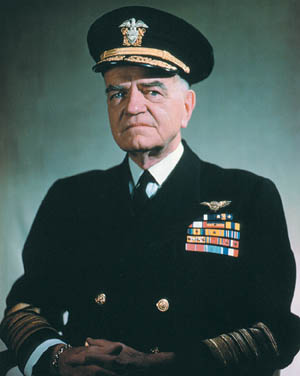 Early in November, two Japanese battleships were sighted heading south through the passage between the Solomon Islands known as “The Slot.” All Halsey had available to oppose them were two heavy and three light cruisers. The odds were long. The two armadas steamed toward each other in the darkness and became hopelessly entangled. They engaged in a savage ship-to-ship slugfest that ended with the sinking of the Japanese battleship Hiei. In the first naval battle of Guadalcanal, every American ship was either sunk or severely damaged. The survivors limped back to safety, but they were finished as a fighting force.
Early in November, two Japanese battleships were sighted heading south through the passage between the Solomon Islands known as “The Slot.” All Halsey had available to oppose them were two heavy and three light cruisers. The odds were long. The two armadas steamed toward each other in the darkness and became hopelessly entangled. They engaged in a savage ship-to-ship slugfest that ended with the sinking of the Japanese battleship Hiei. In the first naval battle of Guadalcanal, every American ship was either sunk or severely damaged. The survivors limped back to safety, but they were finished as a fighting force.
That left only the damaged Enterprise, which could only launch and land at half capacity; the battleship South Dakota, which could not employ one of its forward turrets; and the battleship Washington, which was relatively unscathed. Halsey soon sent them into the fray.
The day after the first naval battle of Guadalcanal, 11 large Japanese transports and their destroyer escorts were spotted heading toward the island. When the news reached the brass in Washington, D.C., there was much hand wringing and thought was given to evacuating the Marines from their desperate situation. Aboard the Argonne, however, Bull Halsey saw it differently. All available planes were dispatched to the area. Halsey told them to focus their attacks on the transports. By the end of the day, seven were sunk or dead in the water, but the Japanese kept coming.
Another enemy battleship force sought to bombard Henderson Field on the war-ravaged island, but South Dakota and Washington met them in the Second Naval Battle of Guadalcanal. Once again, both sides took a heavy pounding in one of the few World War II battles in which battleships opposed each other. The all-important Henderson Field, a serviceable airstrip for American planes on Guadalcanal, was spared.
A flattering portrait of Bull Halsey graced the cover of the November 30, 1942, issue of Time magazine. The accompanying article made no bones about the situation in the South Pacific: “Halsey saved Guadalcanal,” the story read. He had promised the Marines all he had, and he delivered. He was promoted to full admiral and awarded his fourth star.
The admiral’s staff soon outgrew the humid hold of the Argonne, so Halsey officially requested room ashore from French colonial officials. They had not permitted Ghormley to set up his headquarters ashore and dithered when asked by Halsey, but the “Bull” would not be denied. After a few weeks of inaction on the part of the French, he confiscated the empty mansion of a former governor and other space on the island. The war could not be won on protocol. Ashore, he continued his two-pack-a- day habit and often drank in the evening. “I don’t trust a fighting man who doesn’t smoke and drink,” he would say. His legend grew.
Halsey was the Only American Admiral who Gained MacArthur’s Trust
By mid-1943, the American position in the South Pacific had greatly improved and at last Halsey could go on the offensive. That meant attacking the islands north of Guadalcanal, which lay within General Douglas MacArthur’s Southwest Pacific jurisdiction, so Halsey had to deal with the strong-willed Army general.
The admiral flew to Brisbane for a meeting of the minds. Surprisingly, the two men hit it off. Halsey’s philosophy was that there should be complete cooperation between the services. There was only one enemy, the Japanese, and he would not tolerate interservice rivalry. He was the only American admiral who gained MacArthur’s friendship and trust. Their cooperation did much to speed up the war effort.
As the war progressed northward into the Central Pacific, Halsey’s domain became a backwater. He was transferred to command the Third Fleet, which had been outfitted with new ships and was designed to be a fast carrier strike force. It was exactly what the aging airman had dreamed of. Halsey believed in aggressive offensive action against the enemy, but that attitude caused the biggest flap of his career.
American forces landed on the Philippine island of Leyte in October 1944, and the ensuing Battle of Leyte Gulf was the largest naval battle in history. A Japanese counterattack included three naval strike forces, two of them steamed from the west through southern and central passages among the Philippine Isles. Admiral Thomas Kincaid’s Seventh Fleet guarded the southern approach.
The Japanese central force headed through the passage at San Bernardino Strait. Halsey’s Third Fleet, designated Task Force 38 when fully assembled and 34 when assembled in part, was steaming just east of this area at the time, and everyone on the American side thought that he was covering that area against enemy attack.
Then the third Japanese strike force was spotted coming down from the north. When the always aggressive Halsey was informed that the northern force was composed of Japanese aircraft carriers, he ordered all of the 64 ships of Task Force 34 then present to charge after what would prove to be only 17 enemy ships. That left San Bernardino Strait unprotected. The situation was complicated by an hour-and-a-half delay in coding and decoding the hundreds of urgent messages that flew about that day.
Japan’s Super Battleship Yamato
The Japanese central force broke through San Bernardino Strait and bore down on the scratch American force that stood in its way. Only the tiny escort carriers, destroyers, and destroyer escorts of Taffy 3, commanded by Admiral Clifton A.F. Sprague, stood between the powerful Japanese force and the troopships and transports standing off the beaches at Leyte. The Americans were low on bombs and torpedoes, so pilots made attacks on the Japanese with nothing more than their machine guns. The small warships sacrificed themselves in heroic charges. Among the heavy Japanese ships was the super battleship Yamato with its 18.1-inch guns. Also present with the enemy host were several heavy cruisers with 8-inch guns.
Frantic messages went out to Halsey asking for support. He replied that he was engaging the enemy—that, after all, was his job. In the eyes of the beleaguered forces at Leyte however, it was the wrong enemy. To them, Halsey had been lured out of position. Eventually, Admiral Nimitz in Hawaii sent a message, “Where is Task Force 34?” The decoder failed to delete a passage that was only meant to confuse the enemy and contained the line, “the world wonders.” Halsey read it as a rebuff of his engagement of the northern enemy force and he broke down under the perceived insult and sobbed.
Task Force 34 turned back to Leyte. Fortunately for Halsey, the Japanese had lost their nerve, and the central force turned back without accomplishing its mission of disrupting the American landings. The great flap over his leaving his defensive post to pursue offensive action turned out to be mere speculation about what might have happened. Halsey himself felt that his biggest mistake was in turning back and not completing the destruction of the Japanese northern force. As it was, his aircraft sank several Japanese vessels. This was the job for which the American fast carriers were designed. Halsey always chafed at their use in defense.
The Battle of Leyte Gulf saw a new development in warfare. The Japanese began employing Kamikaze suicide pilots who deliberately crashed their planes into American ships, causing appalling losses of men and ships. One of Halsey’s task force admirals developed tactics to counter this threat. Admiral John “Slew” McCain, grandfather of Senator John McCain, doubled the number of fighter planes and halved the number of dive-bombers on his carriers. He set up round-the-clock flyovers of the known airfields on Luzon, which prevented Japanese planes from taking to the air.
The term “Kamikaze” means “Divine Wind”. It was, however, a different Divine Wind that would vex Halsey. Receiving spotty weather reports, once again slowed by coding and decoding, he blindly steamed into the teeth of a raging typhoon. His destroyers, low on fuel, bobbed on the waves like corks. Giant waves heeled them over on their sides, and seawater poured through open vents and exhaust ports. Three of them sank.
On the aircraft carriers, planes came loose from their moorings, slamming about flight and hangar decks, starting fires, and falling overboard. A total of 186 planes were destroyed, seven ships were heavily damaged, and nearly 800 men were lost. The Third Fleet limped back to port. A court of inquiry found fault with Halsey, but Nimitz softened the wording in its opinion to keep the popular fighting admiral in the war.
The storm did not dampen Halsey’s aggressive spirit. Once his ships were mended, he requested permission to raid the enemy in the South China Sea. This he did throughout December 1944 and January 1945. His planes ranged far and wide, destroying what was left of Japanese commercial shipping and land-based planes from Saigon to Formosa.
“Bull” Halsey’s Legacy
In June 1945, the Third Fleet blundered into another typhoon with more loss of life and damaged ships. Fortunately, the war ended before the new court of inquiry could ruin reputations. The Missouri was now Halsey’s flagship, and when it was chosen as the vessel on which the surrender was to be signed, Halsey played host for the ceremonies that ended the war.
In 1946, Halsey was promoted to Fleet Admiral and a fifth star was the reward for his wartime contributions. He passed away in 1959 and is buried in Arlington National Cemetery. He never got to fight the pitched battle he had always wanted. Historians would say that he was not a brilliant commander, that he was a bit old fashioned and out of touch with new types of warfare.
This assessment ignores Halsey’s fighting spirit, which helped rally a nation. It ignores his dogged determination to save Guadalcanal and thus the American offensive in the Pacific. He is faulted for being lured away from Leyte. Yet, he knew far better than armchair historians do that the best defense is a good offense. That is the legacy of Bull Halsey.

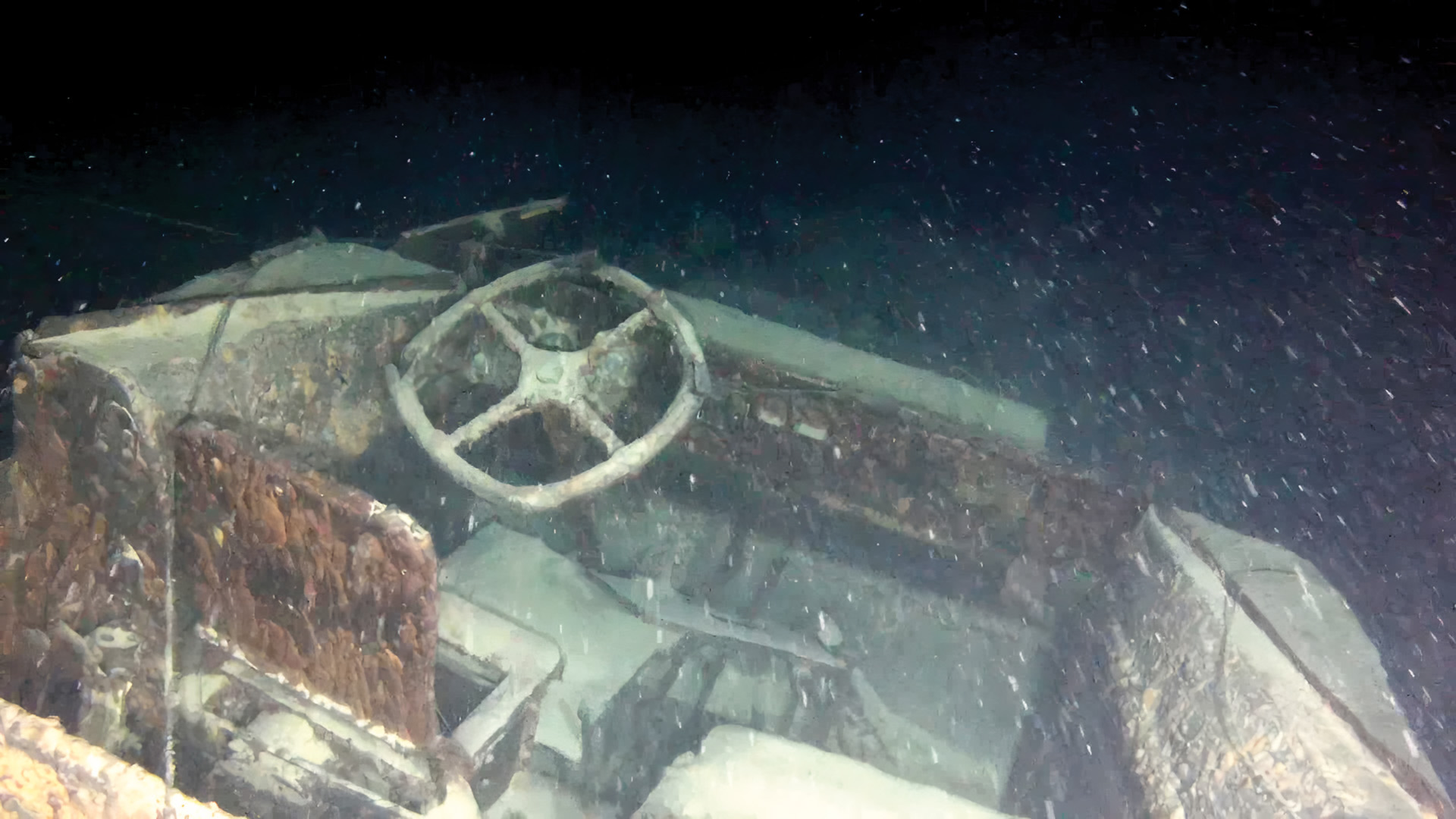
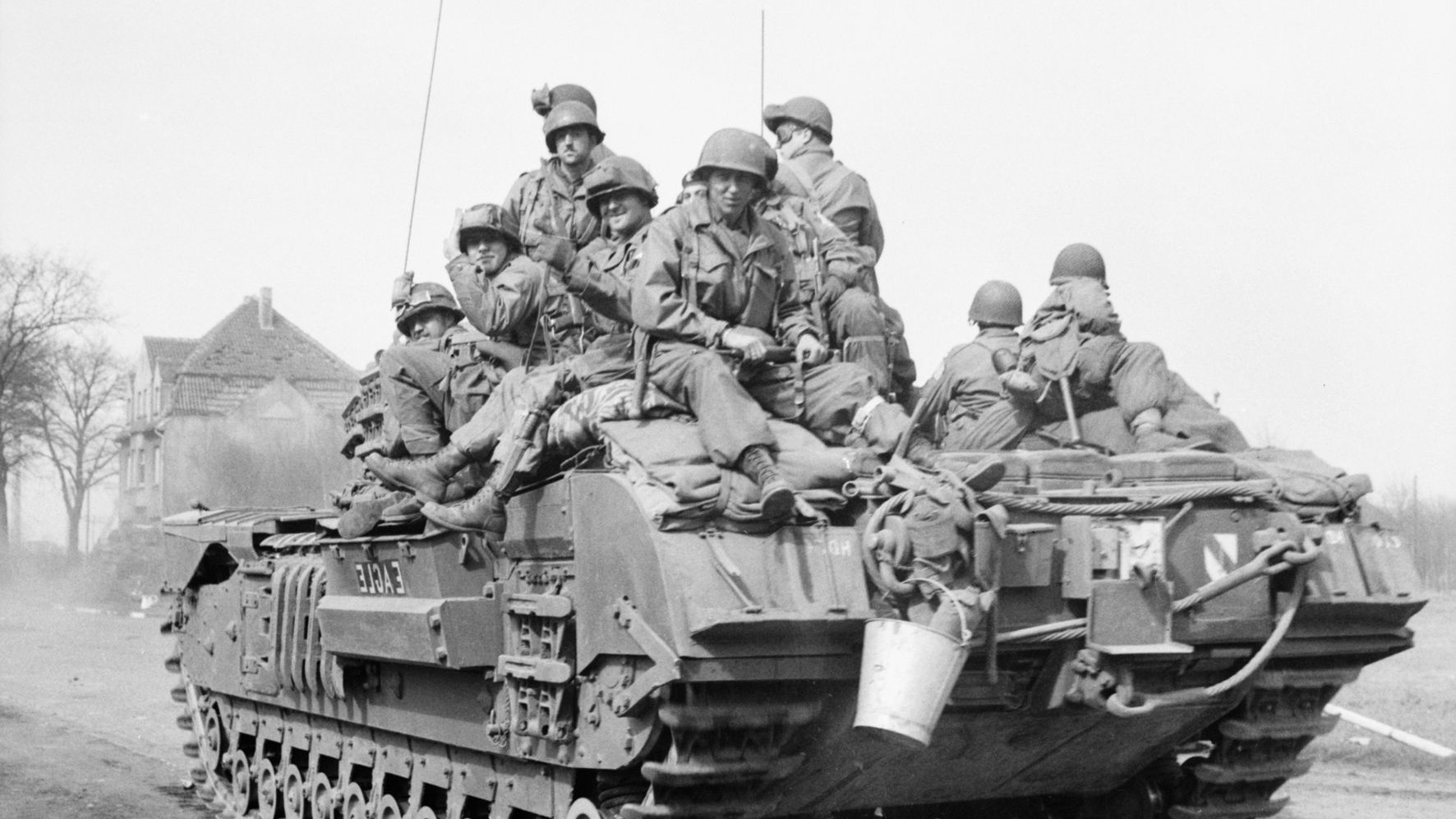
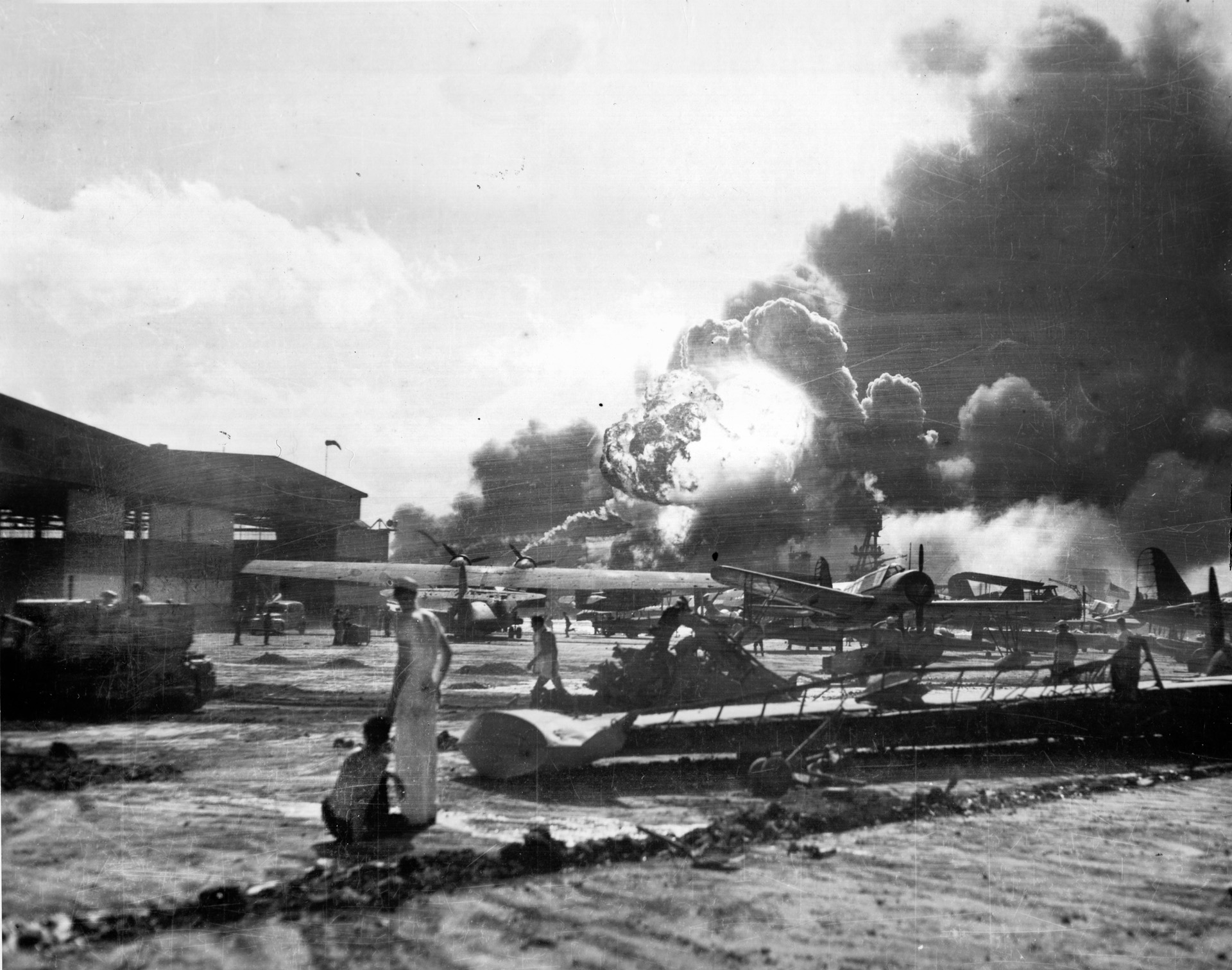
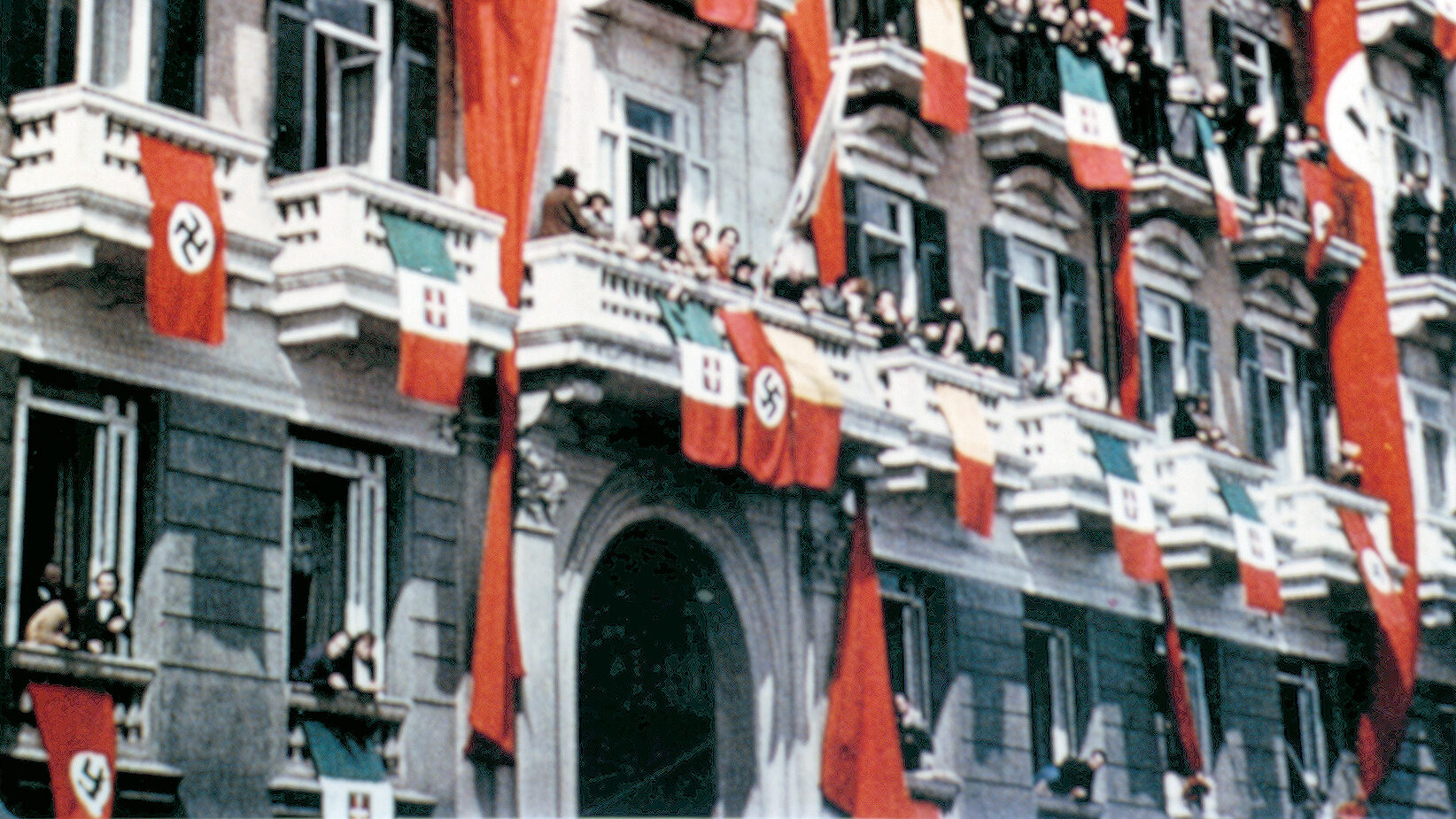
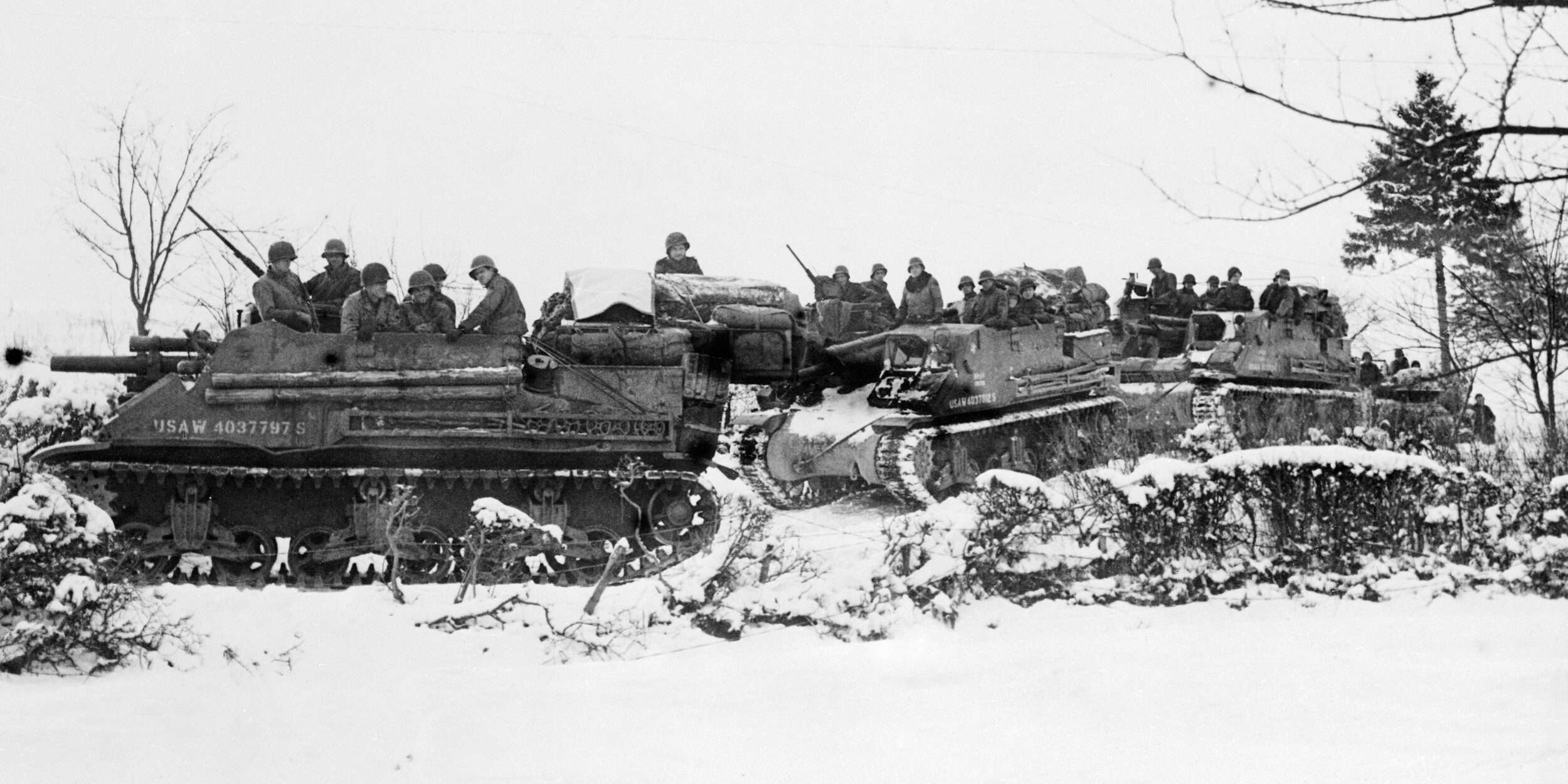
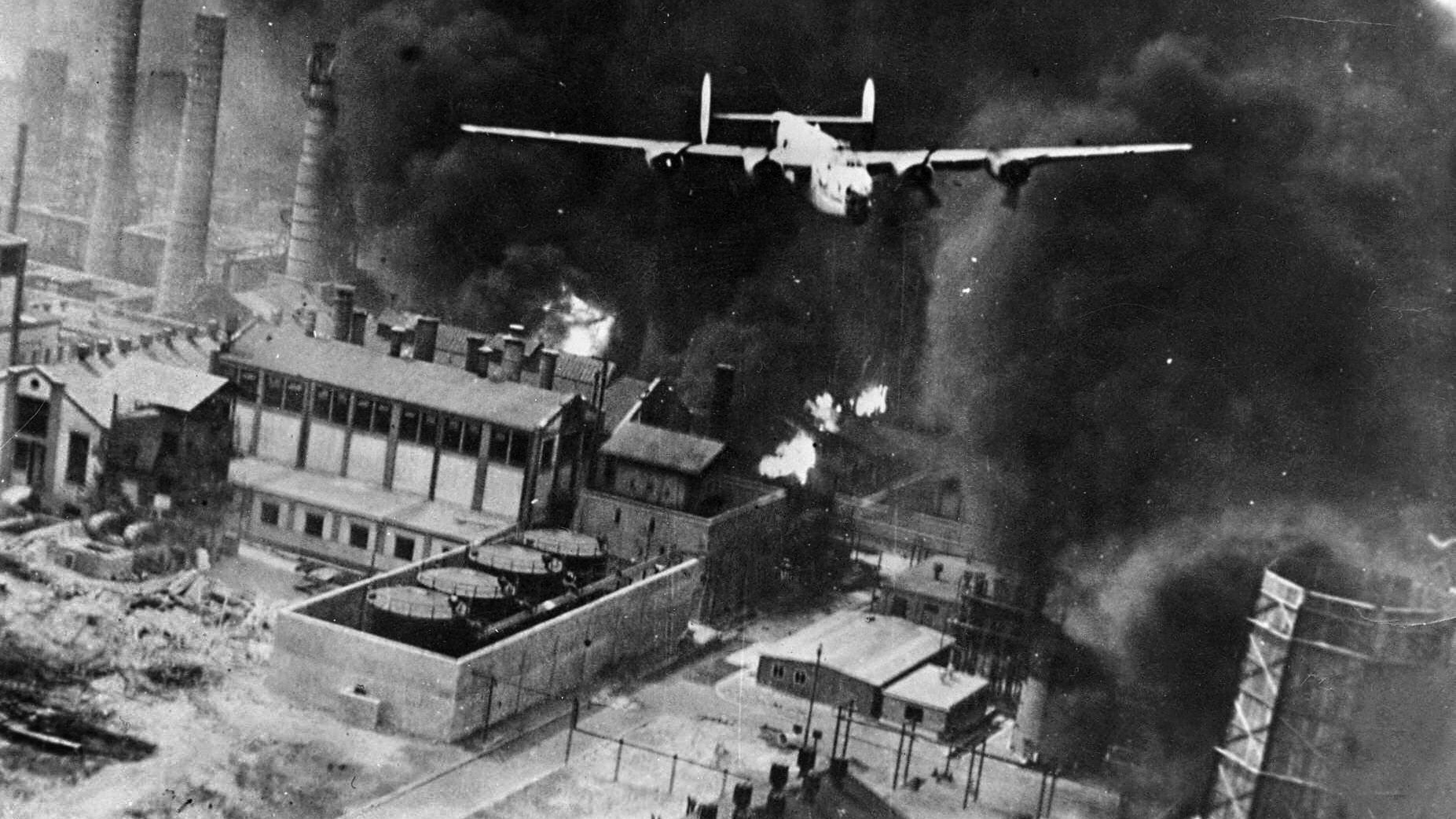
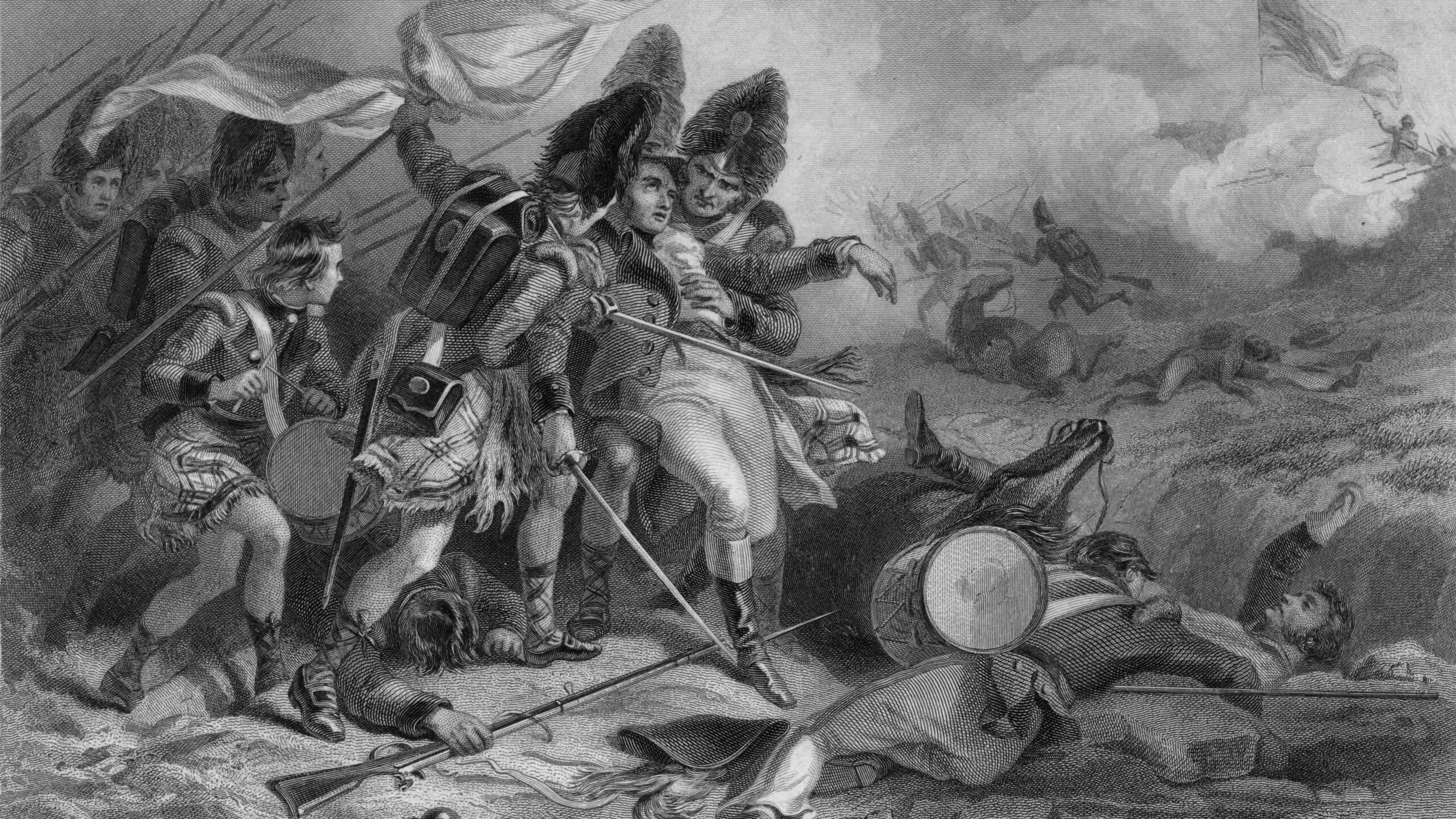
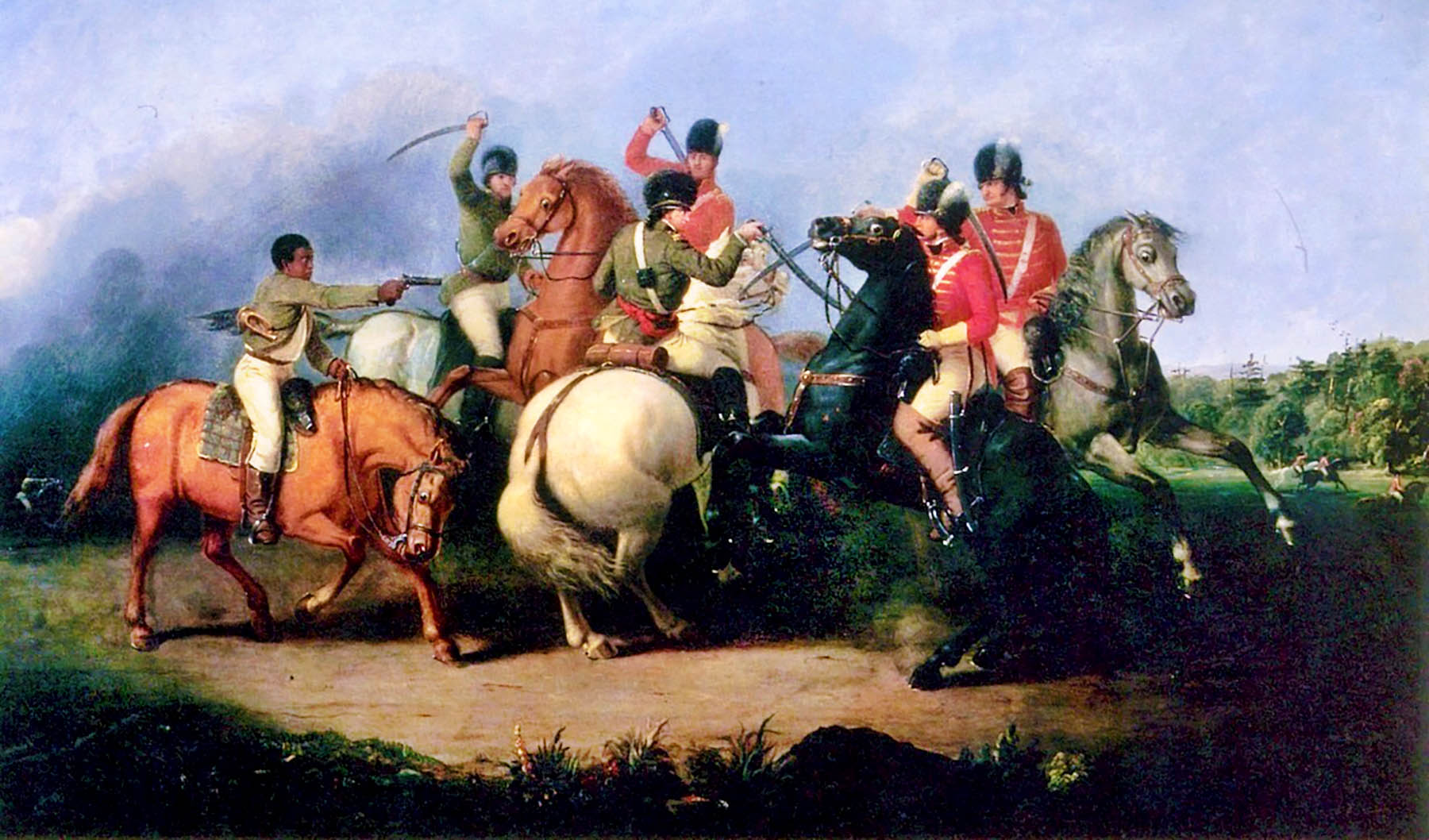
Admiral Halsey looked after the Marines at Guadalcanal, and he instigated the rushed invasion of Port Moresby by the Japanese Imperial Fleet. He did this by attacking Japanese shipping from Moresby over the Owen Stanley Ranges; not an easy decision!
The Japanese were victory filled and attacked Moresby BEFORE their Rabaul airfield could effectively assist their carrier force in the Battle of the Coral Sea. If Halsey hadn’t attacked over the Owen Stanleys the attack on Moresby would likely have been a success, and a Japanese Midway style turning point.
In Naval Warfare, the trait of timidity/rigidity is not well rewarded by reality, though it seems not punished enough by historians.eg. Admiral King not letting the DD Tanks down close to shore at D-Day and letting the infantry go unsupported and against Plan at OMAHA beach.